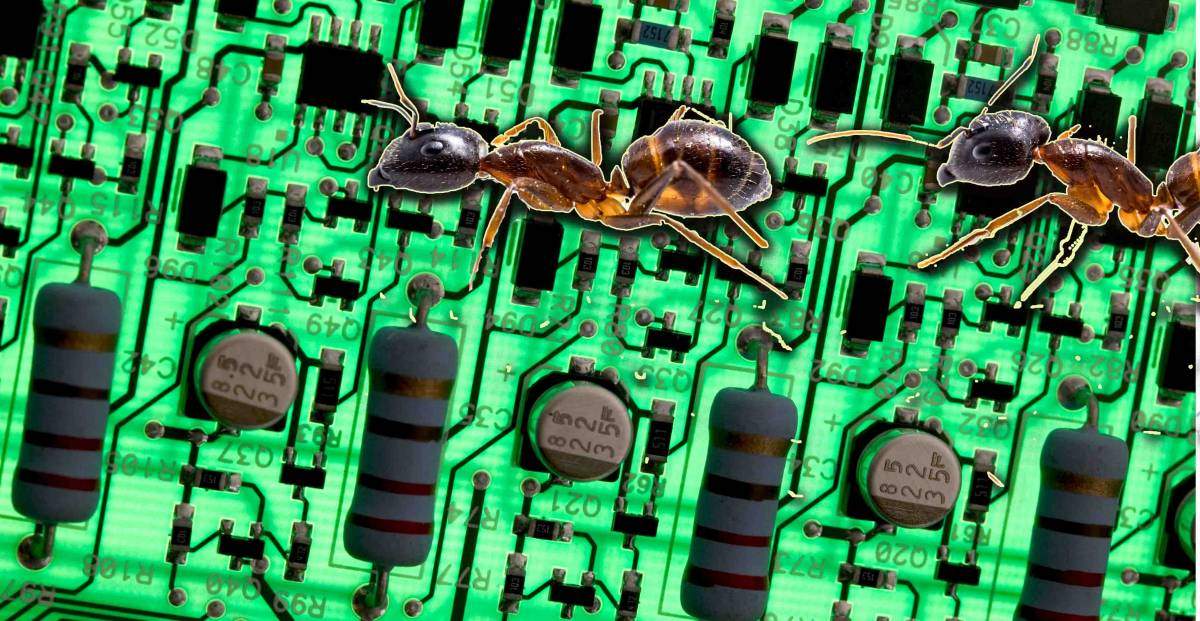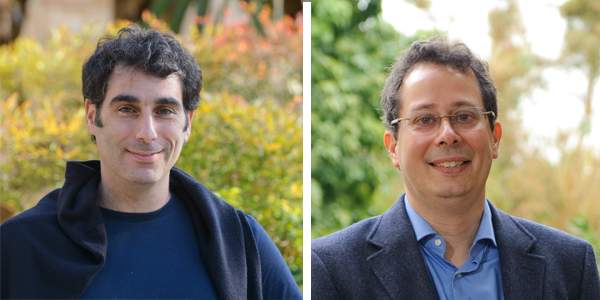Are you a journalist? Please sign up here for our press releases
Subscribe to our monthly newsletter:

Can an arcane branch of quantum physics help solve a problem that plagues modern-day electronics? Prof. Ulf Leonhardt of the Weizmann Institute of Science and his former postdoc, Ephraim Shahmoon, who is now at Harvard University, suggest that a thorough understanding of phenomena associated with the so-called Casimir effect may help reduce the “stickiness” that designers of electronic devices contend with every day.
Leonhardt, a member of the Institute’s Physics of Complex Systems Department, explains that, on extra-small scales such as that of today’s electronics, any moving parts tend to stick. “If you could shrink yourself down to the size of a tiny ant,” he explains, “the world would be a very different place. A water drop would be huge, and the air would be viscous. You would stick to surfaces – making it harder to move, but also giving you the ability to climb walls.” In this shrunk-down world, stickiness comes from the constant fluctuation of the molecules in the air or liquid surrounding the ant or electronic component.
Einstein was the first to note the fluctuation of molecules when he formulated his theory of Brownian motion after observing the constant jostling of particles in liquid. The fluctuations of the water molecules keep the particles stuck in place and jiggle them continuously, so that these movements cannot be precisely predicted.
Such stickiness affects the mechanical components of electronic circuits – resistors and capacitors, for example – as well as the accelerometers in cell phones and the electronic chips that deploy airbags in cars. Since fluctuations not only cause stickiness but are a form of “noise” in the system, they are doubly unwelcome in the components we expect to function on demand. Fluctuation, however, is built into every system: Any form of energy or particle loss entails fluctuation as a matter of course. So, for example, the resistors in an electronic circuit board lose energy in the form of heat, and this leads to fluctuations in the current.

Fluctuations are so ubiquitous, they exist even in a complete vacuum. These are fluctuations in electromagnetic waves created by quantum particles that pop in and out of existence. Predicted by Hendrick Casimir in 1948, they were first clearly demonstrated in 1997: When two very small, thin mirrored plates were hung close together facing one another in a vacuum, they moved toward one another as though invisible fingers nudged them, becoming in essence sticky. The explanation for this is that mirrors hung very close together allow only the shortest wavelengths to exist in the space between them, and thus the total number of waves in the vacuum could be much larger on their outsides. As the waves’ fluctuations jostle the plates toward one another, even fewer wavelengths can exist between them, pushing them yet closer. Can the physics that explains what happens to two thin plates in a vacuum apply to the stickiness of microelectronic devices? Leonhardt and Shahmoon “put together some simple electronics theory with the quantum mechanics of Casimir physics. Ultimately, we found we really could describe the forces causing stickiness in electronic circuits and compute them,” says Leonhardt. The results of their study were recently published in Science Advances.
Their computations suggest that, while it might not be possible to completely overcome stickiness, it is at least possible to take the new findings into account and add off-the shelf or adjust the existing components to make them a bit more “repulsive,” and thus to reduce their tendency to stick.
“The idea that you can manipulate the noise, itself, in your electronic components to make them a bit more efficient is a new concept, and one that may give engineers and developers a new degree of freedom. Our calculations show that using existing electronic components you can ‘lubricate’ the system and help the mechanics move more smoothly,” says Leonhardt.
“Much of the quantum physics that seems to be weird and removed from our everyday world can actually help us understand the reality we live in,” he adds.
Prof. Ulf Leonhardt's research is supported by the Wolfson Family Charitable Trust. Prof. Leonhardt is the incumbent of the Murray B. Koffler Professorial Chair.